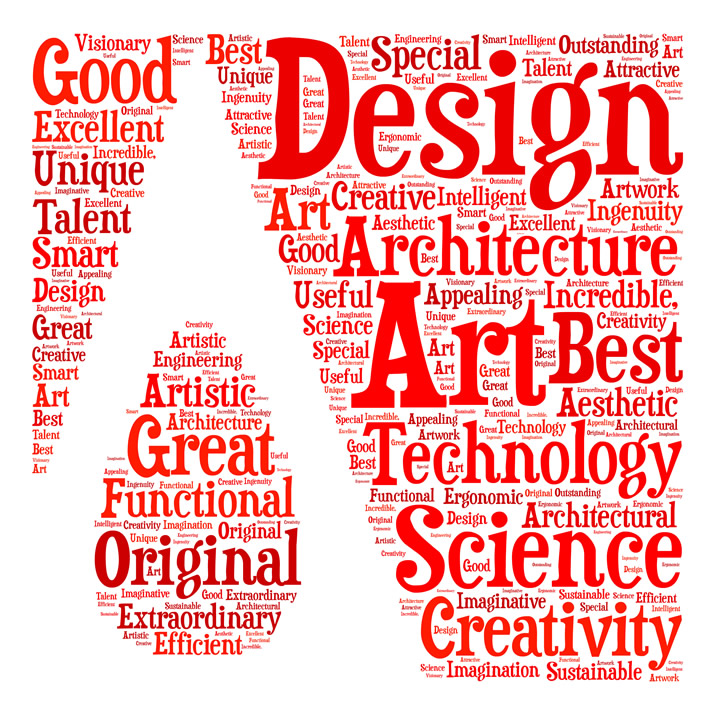
| THE AWARD |
| CATEGORIES |
| REGISTRATION |
| SUBMIT YOUR WORK |
| ENTRY INSTRUCTIONS |
| TERMS & CONDITIONS |
| PUBLICATIONS |
| DATES & FEES |
| METHODOLOGY |
| CONTACT |
| WINNERS |
| PRESS ROOM |
| GET INVOLVED |
| DESIGN PRIZE |
| DESIGN STORE |
| THE AWARD | JURY | CATEGORIES | REGISTRATION | PRESS | WINNERS | PUBLICATIONS | ENTRY INSTRUCTIONS |
Editorial Perspective |
Home > Theory > Textual Presentation |
Editorial Perspective
When entering text, type in a way as if it was written by a journalist, using "Editorial Perspective".
What is Editorial Perspective Text?
Editorial Perspective Text has the following properties: 1. Third Person Narrative: It is written from a Third-Person Narrative. 2. Understandable by General Public; It is semi-formal, not poetic; precise and concise, broad in its audience. 3. Neutral: It lacks superlatives, super adjectives, and it represents viewpoints fairly and without bias and verifiable with no original research. 4. Relevant : it covers the correct and relevant topic. Browse down to read in detail what they mean, and how to fix any issues that relates to them.
 Importance of Editorial Perspective
Importance of Editorial Perspective
You are highly suggested, and in some cases required to use the Editorial Perspective for your texts that you provide to A' Design Award. When you use editorial perspective any press member could simply integrate your text into their articles without paraphrasing or changing perspective (from first or second person to third person). Thus it is important to prepare all text in Editorial Perspective. Furthermore, our case studies and focus group tests show that Editorial Perspective texts could be translated much easier, faster and with more accuracy. Since A’ Design Award & Competition translates most award winning entries to dozens of languages, using Editorial Perspective is highly relevant and important when typing in your text.
1. Editorial Perspective > Third Person Narrative
When mentioning your design, type the text in a way as if it was written by a journalist. Doing so helps increase the number of press appearances and mentions. Modify your sentences by distancing yourself from the subject. Use definite article for example when mentioning the entry; The only definite article in English is the word the, denoting person(s) or thing(s) already mentioned, under discussion, implied, or otherwise presumed familiar to the listener or reader.
| Table 1. Quick Fixes for Third Person Narrative when Mentioning Design | |||
| Incorrect | Correct | Alternative | |
| my design | ➜ | the (design name) | his/her design |
| our design team | ➜ | the (design name) design team | their design team |
| I | ➜ | (your name) | the designer |
| we | ➜ | (design team) | the design team for (design name) |
| me | ➜ | (your name) | the designer |
| us | ➜ | (design team or company name) | the design team / company name |
| Table 2. How to make First Person Narrative into Third Person Narrative | |||||
| Incorrect | Type | Correct | |||
| Singular Pronouns |
I | First Person Subject | ➜ | he / she | Third Person Subject |
| me | First Person Object | ➜ | him / her | Third Person Object | |
| my | First Person Possessive Determiner | ➜ | his / her | Third Person Possessive Determiner | |
| mine | First Person Possessive Pronoun | ➜ | his / hers | Third Person Possessive Pronoun | |
| myself | First Person Reflexive | ➜ | himself / herself | Third Person Reflexive | |
| Plural Pronouns |
we | First Person Subject | ➜ | they | Third Person Subject |
| us | First Person Object | ➜ | them | Third Person Object | |
| our | First Person Possessive Determiner | ➜ | their | Third Person Possessive Determiner | |
| ours | First Person Possessive Pronoun | ➜ | theirs | Third Person Possessive Pronoun | |
| ourselves | First Person Reflexive | ➜ | themselves | Third Person Reflexive | |
| Table 3. How to shift Second Person Narrative to Third Person Narrative | |||||
| Incorrect | Type | Correct | |||
| Pronouns | you | First Person Subject | ➜ | they | Third Person Subject |
| you | First Person Object | ➜ | them | Third Person Object | |
| your | First Person Possessive Determiner | ➜ | their | Third Person Possessive Determiner | |
| yours | First Person Possessive Pronoun | ➜ | theirs | Third Person Possessive Pronoun | |
| yourself | First Person Reflexive | ➜ | themselves | Third Person Reflexive | |
2. Editorial Perspective > Understandable by General Public
Your text shall be understood by people who read it without looking at your images. It should also provide a hint to visually disabled people, therefore do not make visual references such as “as seen in the image” etc. Do not use literary art which uses aesthetic and rhythmic qualities of language—such as phonaesthetics, sound symbolism, and metre—to evoke meanings in addition to, or in place of, the prosaicostensible meaning ; i.e. type it with simple English which could be understand by foreigners. Since your text should be translated, it is very important not to use “poetic text”. Do not use jargon. You must use a spell checker to fix your text always: use computer program that finds and corrects misspelled words in documents; type in a text editor that automatically checks your text. Make your text grammatically flawless. Proofread your text. Avoid Slang. Use regular case.
| Table 4. Making text Understandable, Several Examples | ||
| Incorrect | Correct | |
| as seen in the picture | ➜ | (describe what is seen) |
| as seen in chart above | ➜ | (describe chart, and avoid use of prepositions such as above, on the right, on the left, below). |
| as you see | ➜ | as seen (describe what is seen or use passive voice) |
| April is the cruelest month, breeding Lilacs out of the dead land.... (T S Eliot) | ➜ | Spring is not a really good time of the year. (be straightforward about what you intend to mean). |
| Bang for the buck | ➜ | to get the most for your money (do not use business jargon) |
| IIRC | ➜ | If I remember correctly (do not use jargon) |
| IRC | ➜ | Internet Relay Chat (do not use abbreviations) |
| prof erad te texth | ➜ | Proof read the text (use spell checker) |
| within the ambiental contest | ➜ | within the environmental context (use correct words) |
| DESIGN IS ABOUT LOVE. | ➜ | Design is about love. (Sentence case shall be used) |
3. Editorial Perspective > Natural
Be natural in your text. Do not use advertising language, do not use overt sales language. Have an objective tone. Do not fill your text with chain adjectives. Avoid the following superlatives: excellent, magnificent, wonderful, glorious, marvellous, brilliant, supreme, consummate, outstanding, prodigious, dazzling, remarkable, formidable, fine, choice, sterling, first-rate, first-class, of the first water, of the first order, of the highest order, premier, prime, unsurpassed, unequalled, unparalleled, unrivalled, unbeatable, peerless, matchless, singular, unique, transcendent, best, greatest, worthiest, pre-eminent, perfect, faultless, flawless; crack, ace, stellar, wicked etc, if you use them, provide proof or simply demote them a level down. Your text shall also be verifiable with no original research i.e. people reading your text can check that validity of your statements or information from a reliable source, research, test etc. Represent fairly, proportionately, and, as far as possible, without bias, all of the significant views that relates to your design; be your own judge before others would do so. Represent fairly, proportionately, and, as far as possible, without bias, all of the significant views that relates to your design; be your own judge before others would do so. Avoid stating opinions as facts especially with superlatives. Avoid stating seriously contested assertions as facts. Prefer nonjudgmental language. You could potentially mention the relative prominence of opposing views. Avoid peacock terms (legendary, great, acclaimed, visionary, outstanding, leading, celebrated, award-winning, landmark, cutting-edge, extraordinary, brilliant, famous, renowned, remarkable, prestigious, world-class, respected, notable, virtuoso) and Avoid weasel words (phrases or words that sound good without conveying information, obscure precision.), generalization should also be avoided when possible. See a list of "peacock words for design".
| Table 4. Making text Natural, Several Examples | ||
| Incorrect | Correct | |
| the most beautiful design ever | ➜ | a beautiful car (tell the truth in a humble way) |
| excellent design | ➜ | good design (demote one level down) |
| better, stronger, faster | ➜ | more efficient (do not use chain adjectives) |
| my amazing magnificent incredible design | ➜ | the design (be humble) |
| most efficient | ➜ | very efficient in X tests done by Y (provide proof) |
| the hardest material is used | ➜ | a very hard material is used (if it is not diamond) |
| the most beautiful | ➜ | deemed beautiful by many people (sincere) |
| I am the best designer ever | ➜ | he is a designer (do not use peacock terms) |
| some people say that | ➜ | (specific) people stated that (avoid weasel words) |
| you need to get this NOW | ➜ | it is a limited time offer (more reality, less ads) |
4. Editorial Perspective > Relevant
We often see that there is a confusion about what to talk about in different text sections when filling your profile and design details. The table below can help.
| Table 5. Making text Relevant | ||
| Text Section | Correct Topic | |
| Design>Brand Text | ➜ | The brand. (not about the product) |
| Design>Yearbook Text | ➜ | The design. (not about you or your brand) |
| Design>Textual Desriptions | ➜ | The design aspect. (not about you or your brand) |
| Personal Profile | ➜ | The designer, design team or company. (not about your design) |
| Corporate Profile | ➜ | The company or institution. (not about you or your design). |
5. Summary
We implement a style guideline in order to keep a consistent look and maintain editorial consistency when featuring the award winning designs. An easy-to-read publication is a valuable reference tool, which will make for better results for you. You need to ensure that the text is from a third person perspective and does not include ALL CAPS, foreign language, issues of punctuation, spelling or grammar.

